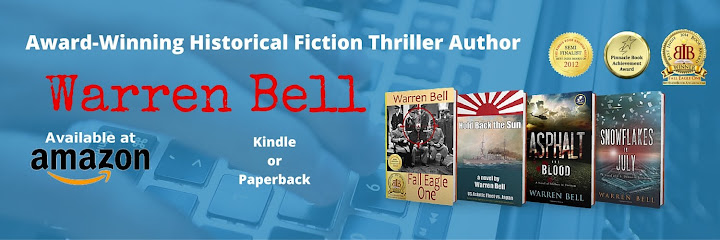Photo: Karen Williams
Yesterday morning, I spent a pleasant hour lying in a
fishnet hammock under the shade of the wide verandah of a beach house on North
Carolina’s Outer Banks. A cool breeze blew in off the Atlantic, whipping up
little whitecaps on the sea surface, gently nodding the khaki-toned seedpods of
the sea oats on the tall dunes. As the hammock slowly swayed, the soothing
sensations that flooded my brain brought to mind the words of a poem by Robert
A. Heinlein that I read decades ago in his 1951 science fiction classic, The Green Hills of Earth:
Let the sweet, fresh
breezes heal me
As they rove around
the girth
Of our lovely mother
planet
On the cool, green
hills of earth. …
We pray for one last
landing
On the globe that gave
us birth.
Let us rest our eyes
On fleecy skies
And the cool, green
hills of earth.
In the hustle and bustle of today’s busy world, how little
time we seem to devote to enjoying life’s simple pleasures! We’ve all been told
to, “Take time to smell the roses,” but how many of us really do it? I’ll
confess that, in my fairly long life, I’ve too seldom just relaxed and enjoyed
the everyday pleasures of life. There always seems to be too much to get done
and too little time to do it.
Spending several days at Nags Head with my daughter, Karen,
and her family reintroduced me to sensations that had almost faded from memory:
the warmth of a summer sun upon my bare skin; the feel of salt water covering
my feet and then receding, washing the sand from under my toes; the simple
pleasure of walking down the beach with the love of my life, Annette, and
listening to the breaking surf.
How much of life we miss through careless inattention!
Parents age and pass away; children and grandchildren grow up launch their
adult lives in the blinking of an eye; contact with old friends gradually fades
from memory. The world moves on
whether we are aware of it or not. The assumption that there will always be
time later may be invalid!
In our little Methodist church in El Dorado, Arkansas, the
ministers always told us that we should, “Live every day as if it were to be
our last.” You don’t have to fear
the end of the world to take that message to heart. How much better would we
all be if we could live it?
Note: Warren Bell's debut novel, Fall Eagle One,
detailing a fictitious but plausible assassination attempt on FDR
during World War II, (Semi-Finalist in the Kindle Indie Book Review Best
Books of 2012) is available for Kindle or in paperback on
Amazon.com. His newest novel, Hold Back the Sun,
has been released for Kindle in advance of the printed book launch.
This new historical-fiction thriller, set in the Pacific, follows the
US Asiatic Fleet in their battle with the Japanese in WWII.





